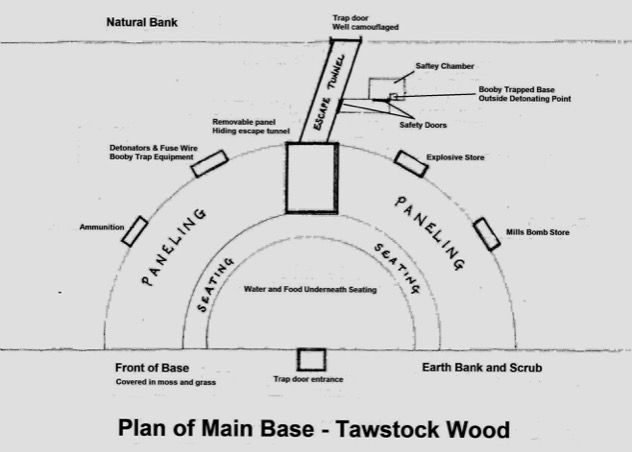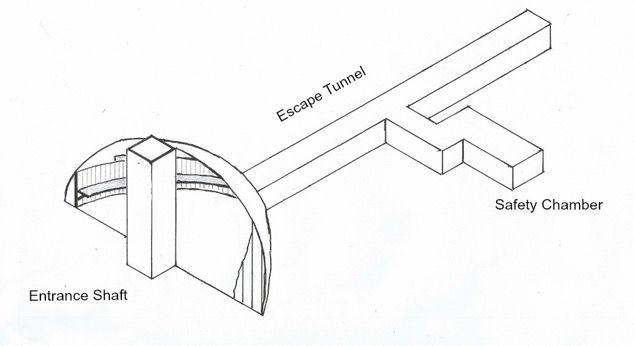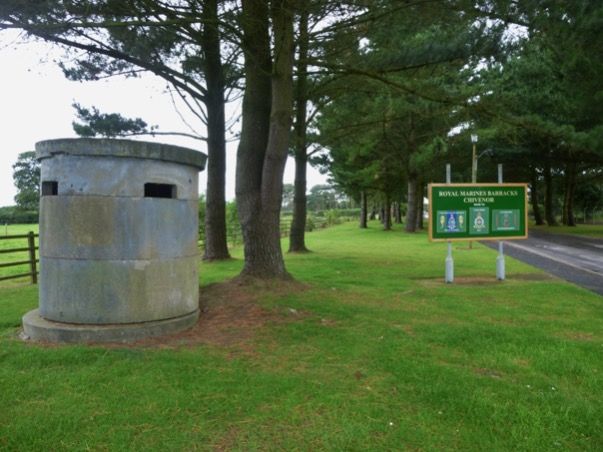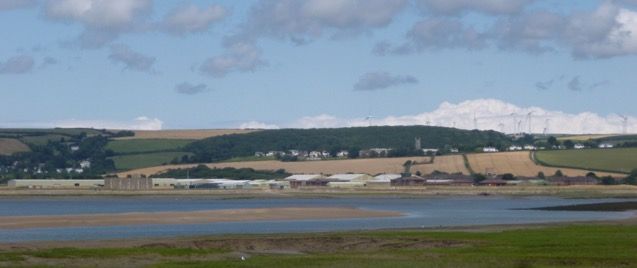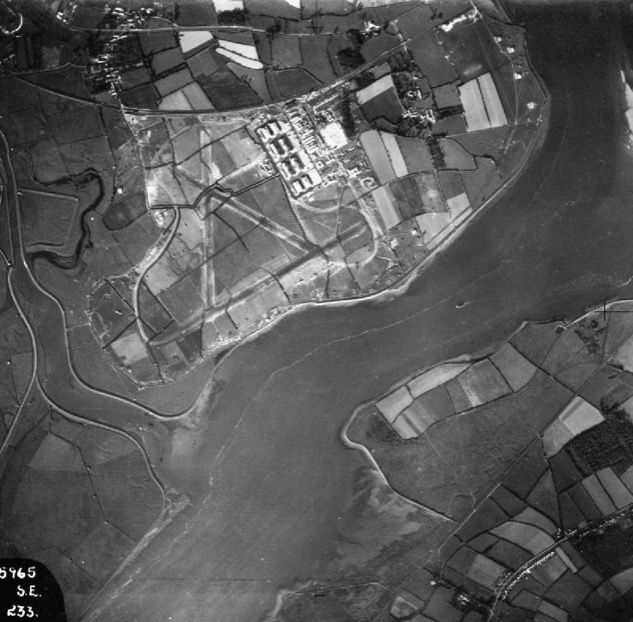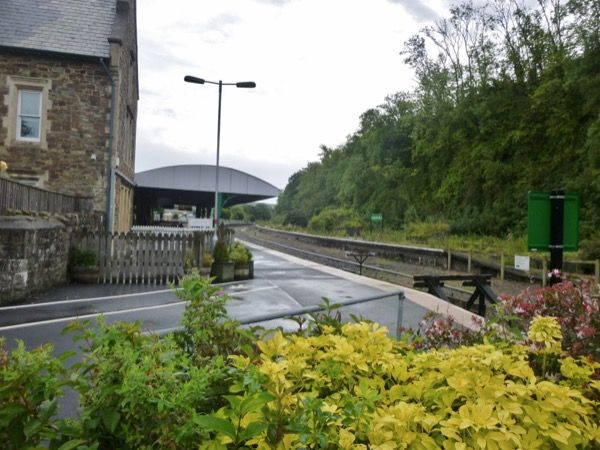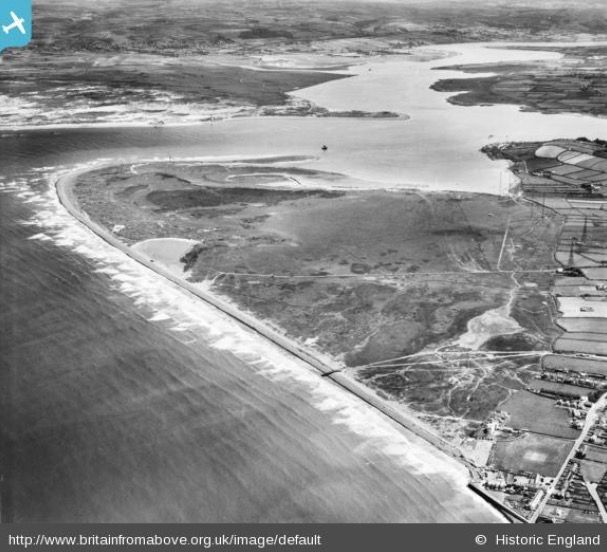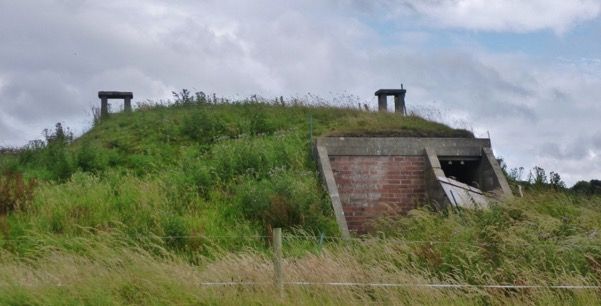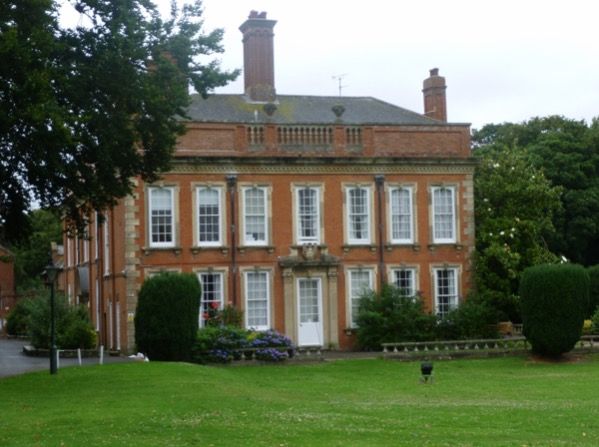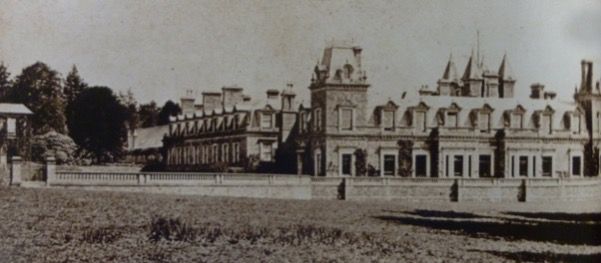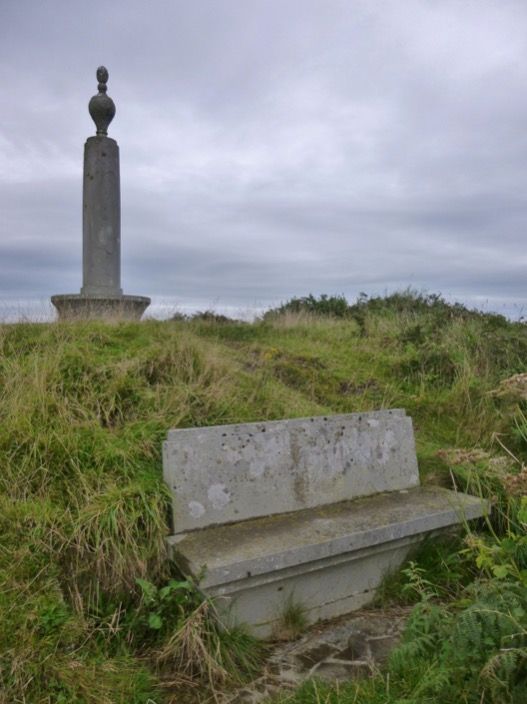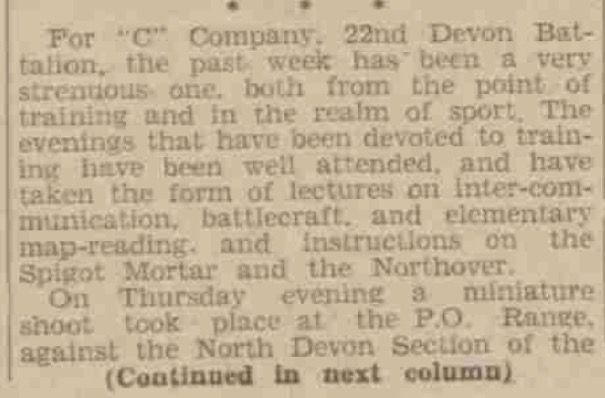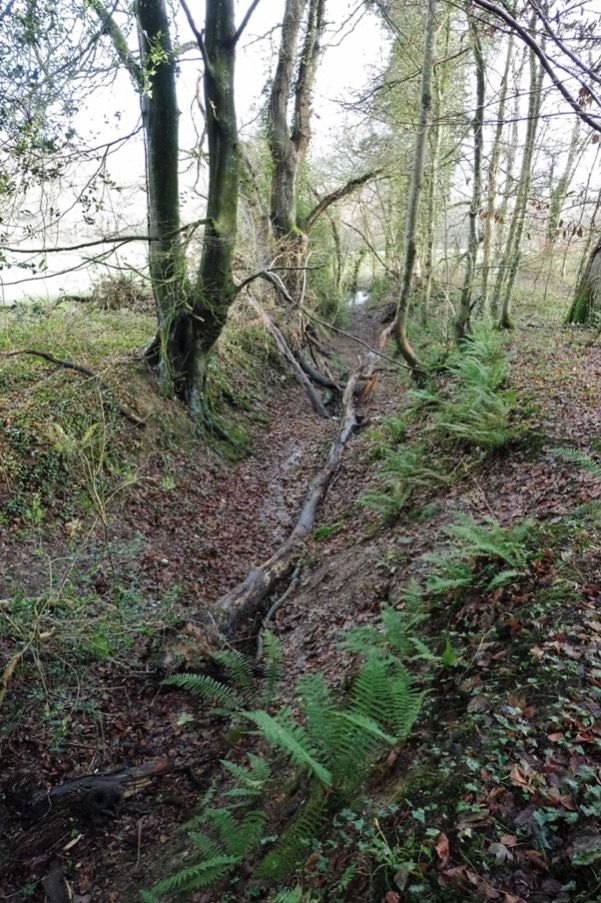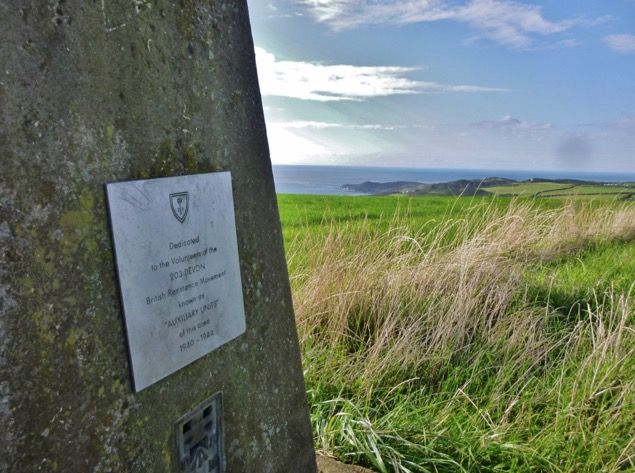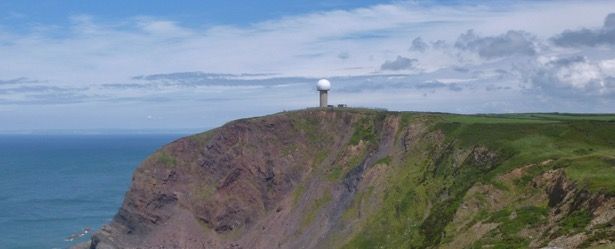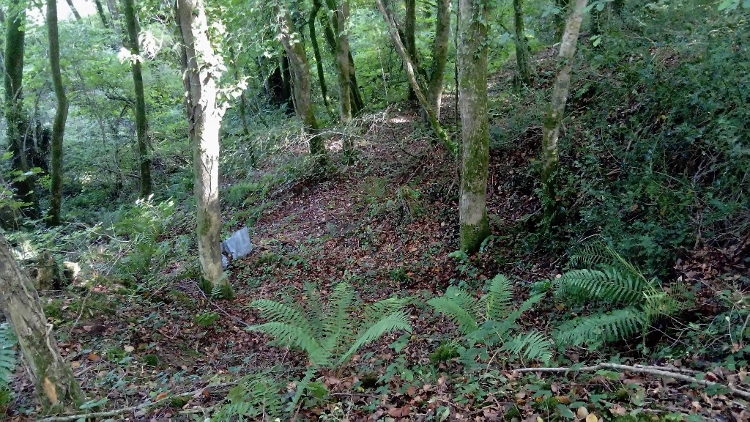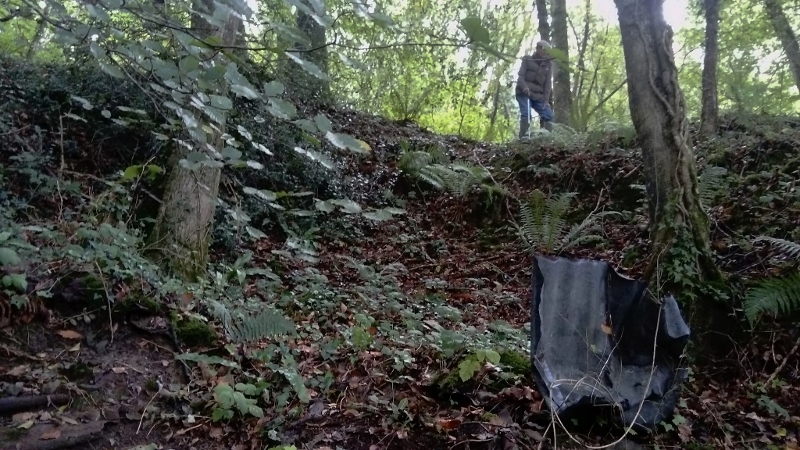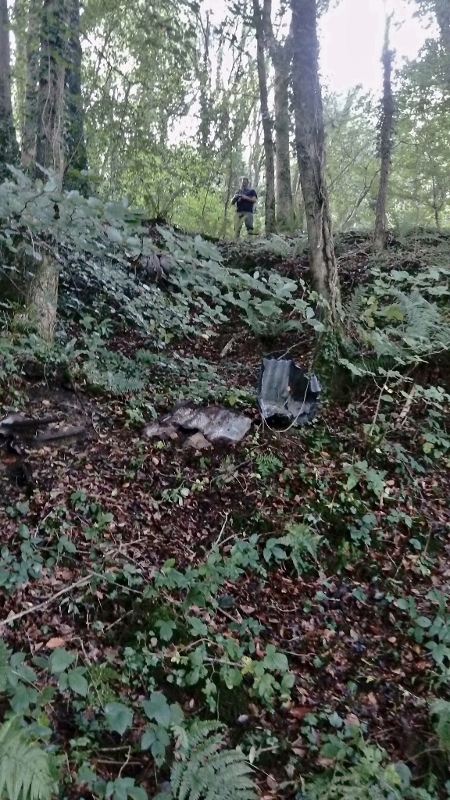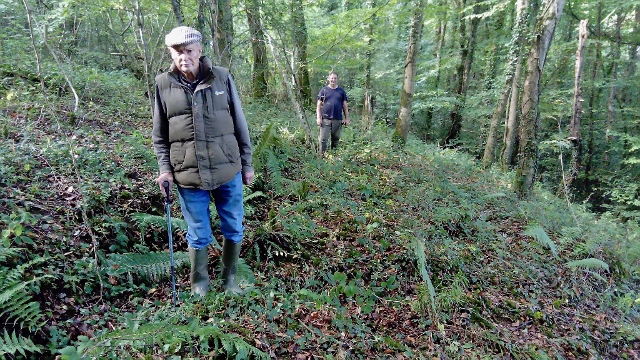Tawstock is a village in North Devon, 2 miles south of Barnstaple.
| Name | Occupation | Posted from | Until |
|---|---|---|---|
| Sergeant Henry Stanley Joyce | Bank manager |
24 May 1940 | 03 Dec 1944 |
| Corporal Joshua Downing | Farmer |
25 Jun 1940 | 03 Dec 1944 |
| Private Stanley William Becklake | Gardener |
01 Jul 1940 | 03 Dec 1944 |
| Private Francis James Bradbeer | Gardener |
01 Nov 1940 | 03 Dec 1944 |
| Private Richard Ewart Downing | Electric battery salesman |
24 May 1940 | 03 Dec 1944 |
| Private George John Shapland | Gamekeeper |
07 Jun 1940 | 03 Dec 1944 |
| Private Edward Bob Shapland | Gamekeeper & rabbit trapper |
24 May 1940 | 16 Apr 1943 |
| Private Gerald Allin Stanbury | Farmer |
03 May 1942 | 03 Dec 1944 |
| Private Albert William Verney | Cattleman and Farmer |
29 Jun 1940 | 03 Dec 1944 |
The Operational Base was in Big Straypark Plantation (also known as Tawstock Wood) to the South of Tawstock. This is on PRIVATE LAND and was accessed with the kind permission of the owner.
The patrol made use of a small hollow or quarry to build an OB shaped like a quarter ball. It is unknown at present the exact location in the wood. It is unclear what the OB was constructed of. It is remembered OB had a secret ( but not obvious to anyone else) tree branch or bush indicator, so the Patrol members could tell if the OB was occupied or empty.
The straight, open side was the front of the base where the entrance shaft was built. The front side was then built up with earth, bushes and dead pieces of trees and a large amount of moss. This was then sloped to match the bank on either side. The trap door leading to the underground base was impossible to see because of its carpet of leaves and moss glued to the door.
Inside a wooden seat was built around the circular side with 3ft boards nailed to the framework. Around the back and above and behind the seat was panelled. Behind the panelling were different compartments for storing equipment and explosives. Water and food was stored under the seating. One panel of boards could be removed to reveal the entrance to the escape tunnel. The escape tunnel was 3ft wide and 4ft high and ran 25 yards to another hollow in the ground where at the end was another trap door. This door could only be opened from inside. Outside, like the entrance, it was covered with moss and dead brushwood.
What was hoped to be a safety chamber was built half way down the escape tunnel. The base itself was booby trapped with triggering wires in the safety chamber. It had two doors, one in main base and one in the safety chamber, which could be closed allowing the main blast of the booby trap to go straight down the escape tunnel. Two doors would help to protect the men from blast.
There were 6 booby traps outside the OB, placed just below the ground, which could be set off at a push of a button. Anyone within 30 yards would be lucky to not be killed.
Bert Verney recalled there were 3 other hide-holes in the area where one man could hide and store a few supplies. He did not state if these are within the same wood or just in the local area. Something is rumoured to have been at Hollamore Clump but at present this cannot be confirmed.
Tawstock Patrol
Many Auxiliers from North Devon have recounted the story of a practice raid on RAF Chivenor (now Royal Marines Base Chivenor) with all North Devon Patrols seeming to take part. The base was well defended from the land side but the river side was wide open. Tawstock Patrol arrived by boat, having drifted in on the tide up the River Taw from Instow a mile or so down stream. They marked each and every plane with a chalk swastika, and the tide having turned, drifted back undetected.
Other Patrols were said to have handed themselves in, while others by-passed defences by pretending to be regular Home Guards defending the site. All the other North Devon Patrols were involved in this raid and all had different targets on the base. Where the outcome is known all were successful. The RAF base had been provided with security from both the regular army troops and also members of local Home Guard Battalions.
Although defenders were warned of an impending attack, Barnstaple railway station also saw “terrible damage to all of the engines and much of the rolling stock” according to Bert Verney. Chalk swastikas were again used to symbolise the damage they could have caused to the rail links.
Though over 10 miles away for Tawstock Patrol, Bert recalled travelling by lorry to a training raid on Hartland Point Radar Station followed by a later raid on the hutments at Northam Burrows. Hartland Point was a Naval VHF intercept station for the 'Y service'. Jointly operated by the Army, Royal Navy, RAF, Foreign Office, Metropolitan Police and the General Post Office, 'Y service' was a feeder service for the Enigma operation at Bletchley Park. Subsequently it became a 'Chain Home Low' radar station. This system was set up in 1940, and the local station was on Northam Burrows, but additional coastal stations were needed to boost coverage at low-level. These had a dual function of plotting surface shipping and low-flying aircraft.
RAF Northam was a chain home air-defence radar station that operated between February or March 1941 and 1945, although by that date the site's domestic accommodation was probably being used for personnel stationed at RAF Hartland Point. It was located on Northam Burrows and adjacent land, with a domestic complex and orderly room (administration) on the south-west edge of the site, on land now occupied by housing. 1946 RAF aerial photographs shows four steel transmitter masts, two wooden receiver towers and a number of transmitter and receiver blocks, with spinal access road and perimeter fencing.
They are considered the best preserved radar remains in Devon.
A night raid took place at Fremington House and camp, which from 1943 to 1945 was an American training camp and post D-Day rehabilitation hospital. On the departure of the US troops it became a British School of Combined Operations HQ.
Bert recalled another group raid on Stevenson House, St Giles in the Wood, near Torrington. Barely habitable after parts were sold for building materials in the 1930s, it was used to billet men from Warwickshire Regiment and later American Forces.
A exercise by the regular forces to defend against an attack on a gun emplacement at Instow was thrown into chaos by the Patrol. Unnoticed, Bert slipped in with some prisoners taken captive and when taken into the base let off a large thunder flash. “In reality I would have perished with the rest but the gun emplacement would have been blown up” explained Bert.
Other targets would have included booby-trapped roads and bridges and transport in general.
In his memoirs Bert Verney recalled he trained with 4 patrols in the area; Torrington, Braunton, Snapper and Bideford, at Tawstock Woods. Although they trained together they were not allowed to visit each others bases so if captured, secrecy was not compromised.
Marksmanship was taught on an ingenious course constructed by the Tawstock Patrol. A dry gully in the woods had been adapted so that as the trainee advanced along it, targets would pop out from behind trees and bushes, actuated by string and controlled by the Sergeant behind him. This gave a limited time to react and fire.
The gully runs for around 325 yards on a gradual incline between Big Straypark Plantation and Straypark Wood.
Bert Verney remembers 1 Browning Automatic Rifle, 8 Sten Guns, 8 Colt Revolvers and a "wicked" dagger.
1 hundredweight of high explosive, Number 36 Mills hand grenades, plenty of ammunition for weapons, enough food for a month and many cans of water. It is assumed that the Patrol would have access to the standard Auxiliary weapons and explosives along with regular equipment.
They were all taught unarmed combat and became expert in explosives, setting booby-traps and blowing stuff up. After stand down Bert remembered “some almighty bangs post war as we were ordered to destroy our stores.”
Bert remembered having a phial of poison containing Potassium Cyanide for if captured or if someone from the village was held captive. These were not standard issue.
Apart from one Auxilier all the members joined in June 1940 and remained until stand down in November 1944. All members had vast knowledge of the countryside and could have lived and managed without too much trouble in their OB for many weeks.
They all had special passes to enable them to travel anywhere without questions.
The late Auxilier Bert Verney from his book “Reflections – A trilogy of memories” ISBN 1 874448 20 5
TNA ref WO 199/3391
Hancock Data held at B.R.A
Land owner Jack Anderton
The memories of the late Auxilier Geoff Bradford
The family of Gerald Slee
A Country Childhood by H.S Joyce. Introduction by Roger Guttridge.
The Book of Bishops Tawton by Amery, Luxford and Sanders.
The Book of Barnstaple - From Coronation to Millennium by Avril Stone
Bideford 500 and Diana Yendell
Dr Will Ward
A and M Passmore – Leaflet SDV347318. Devon HER Subterranea Britannica North Devon Journal.
